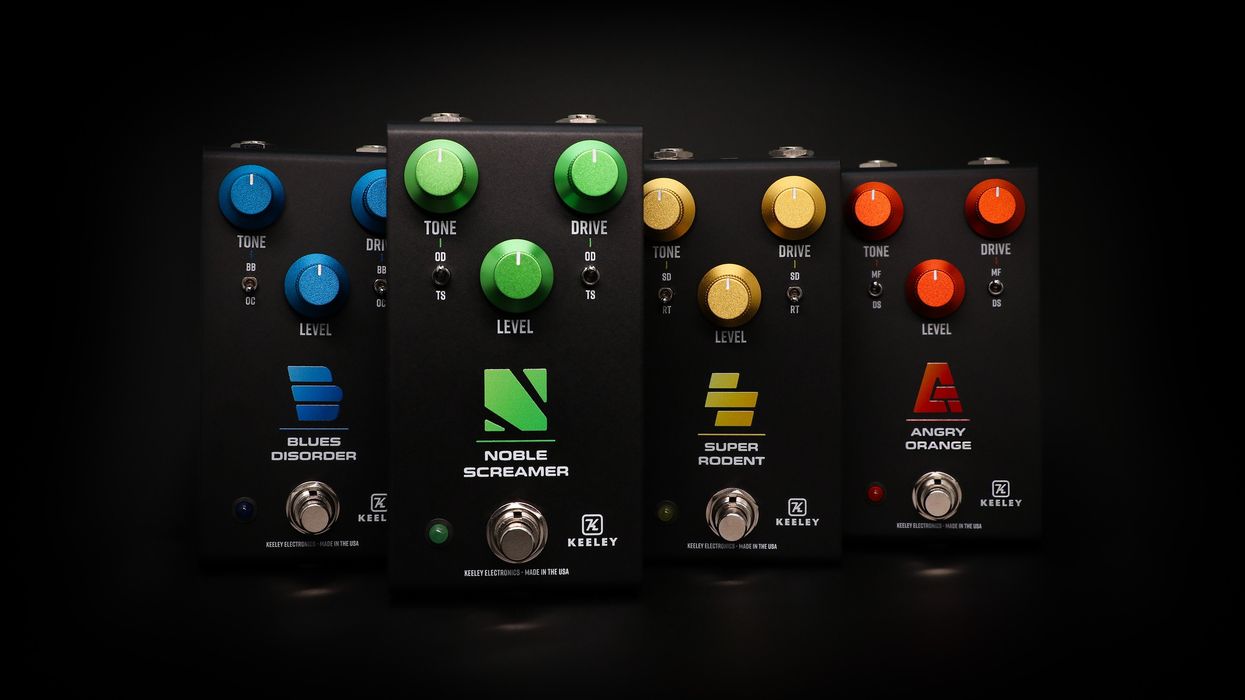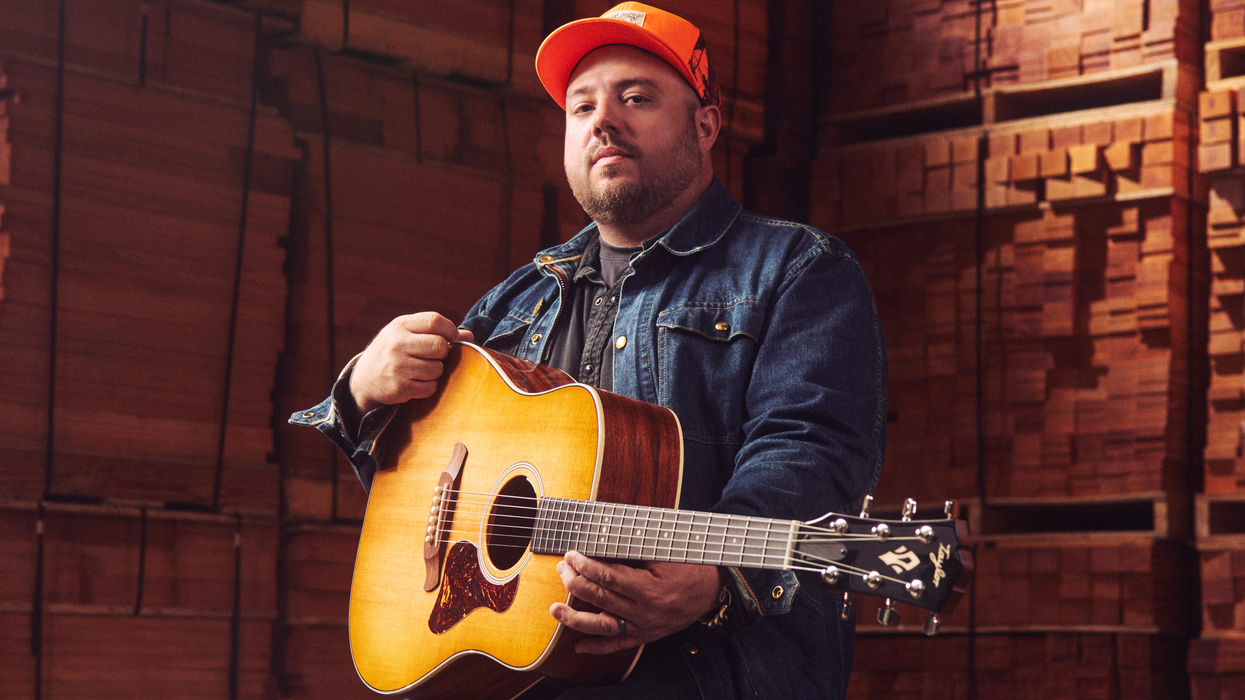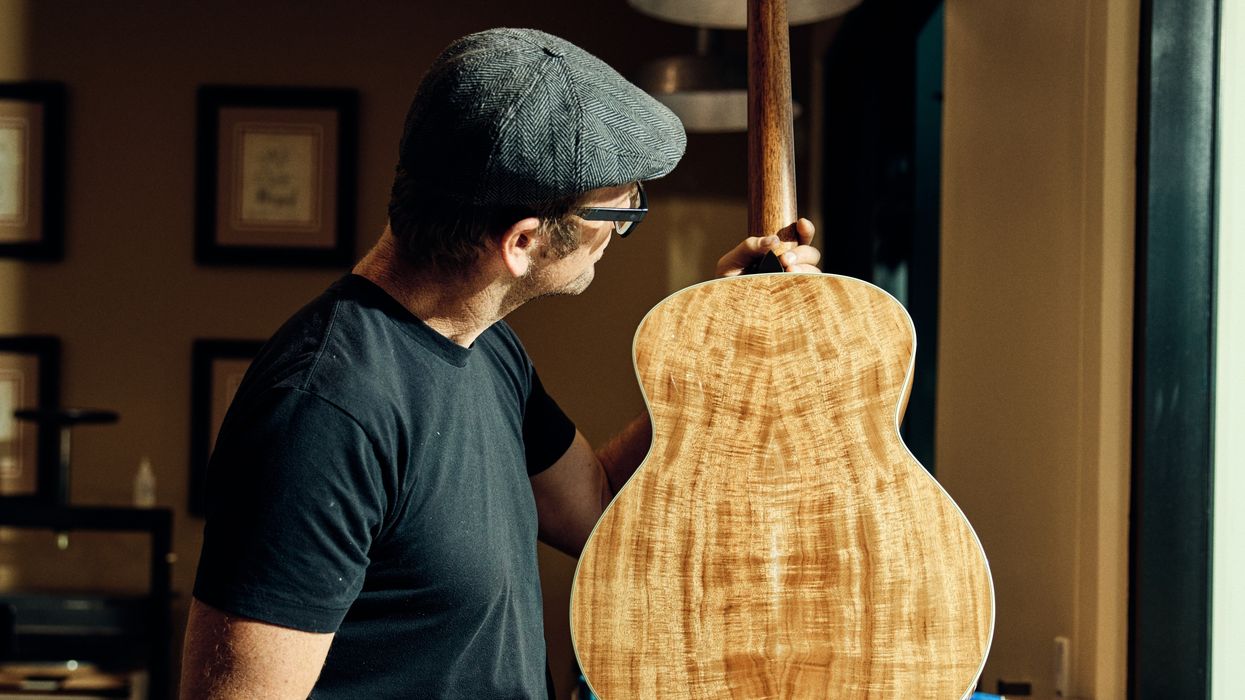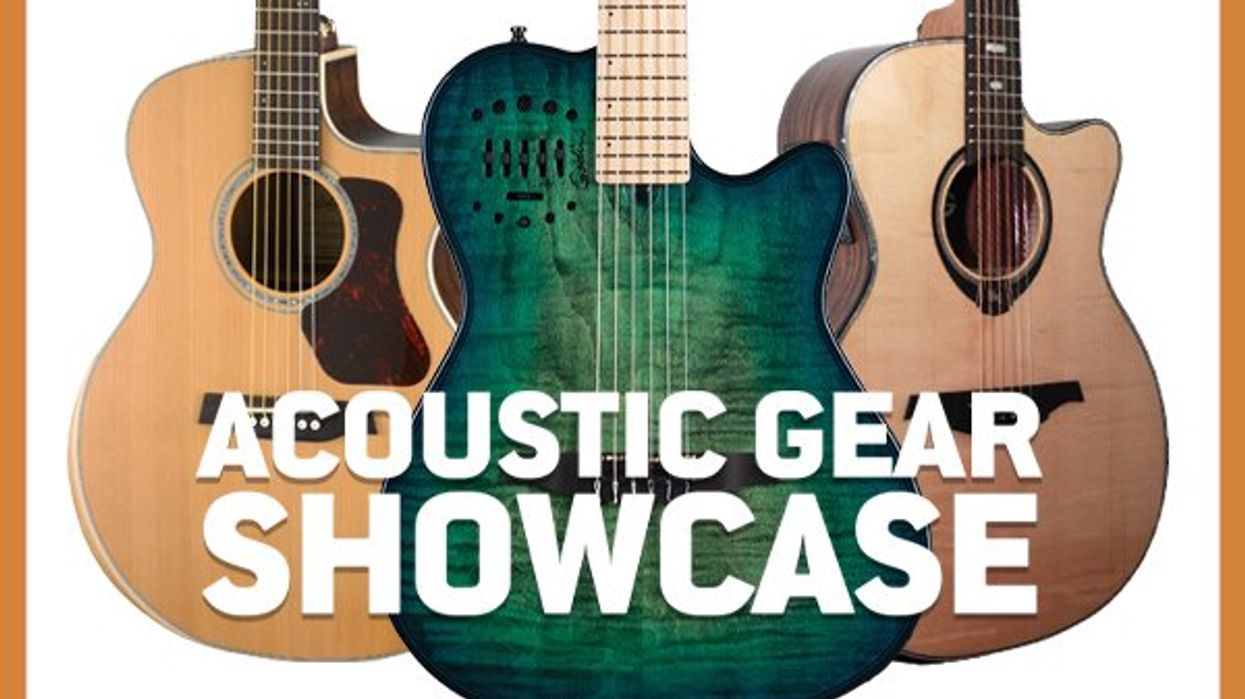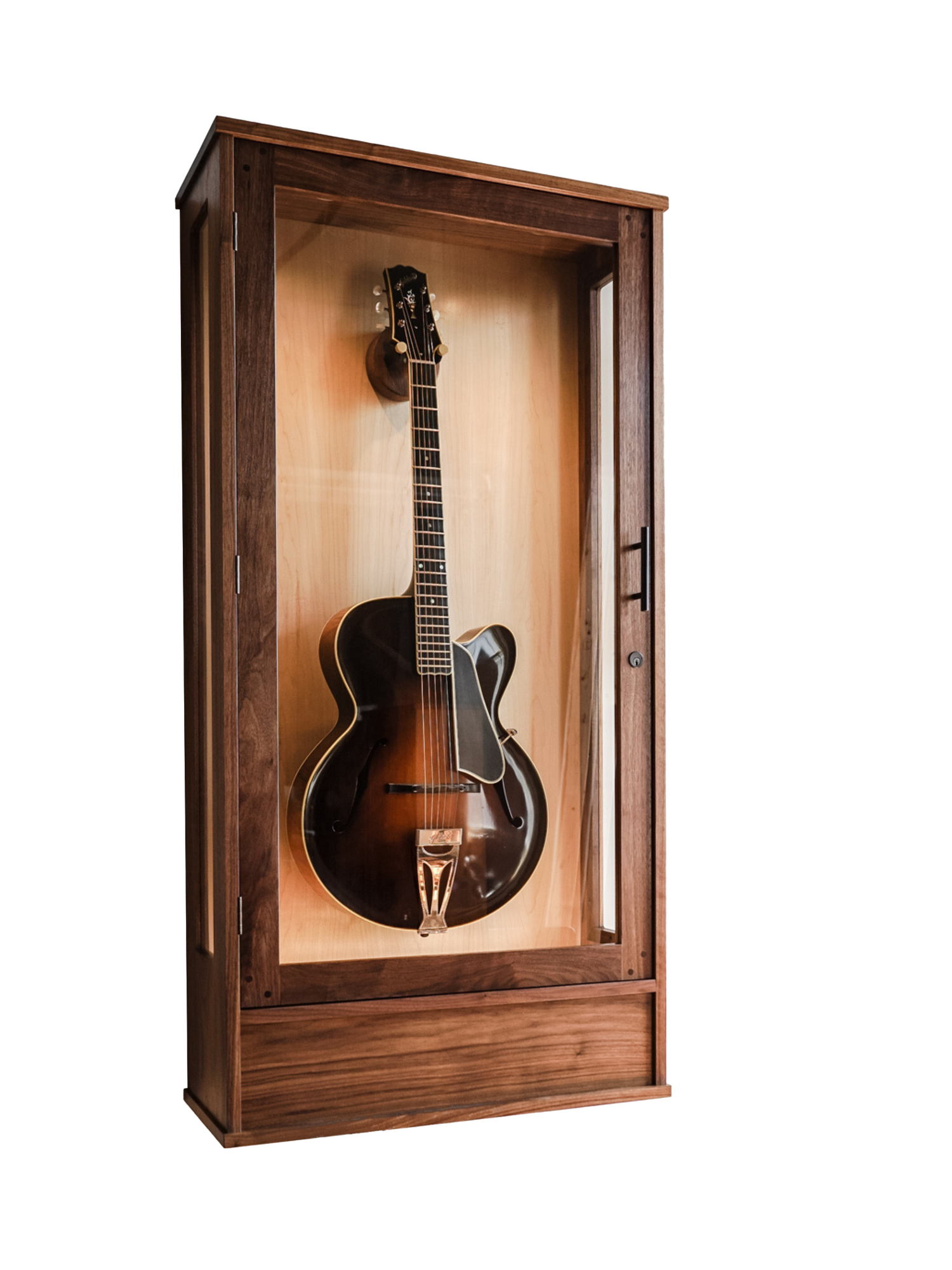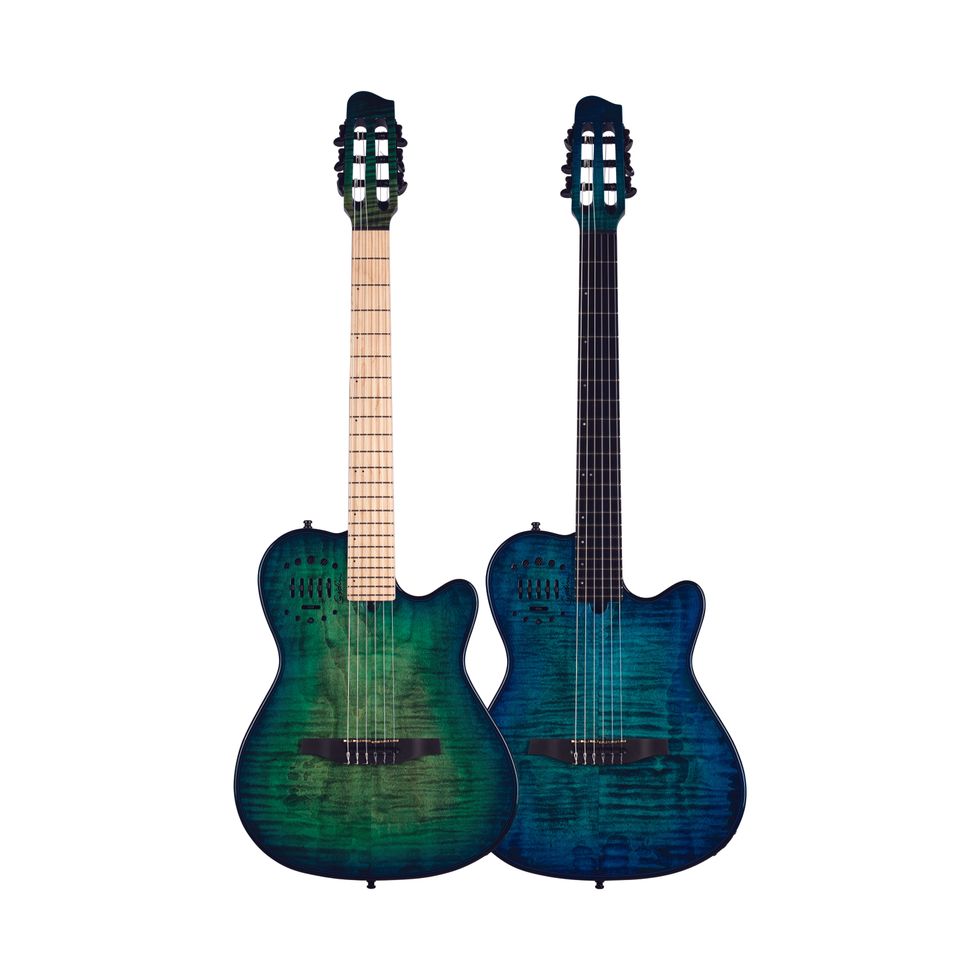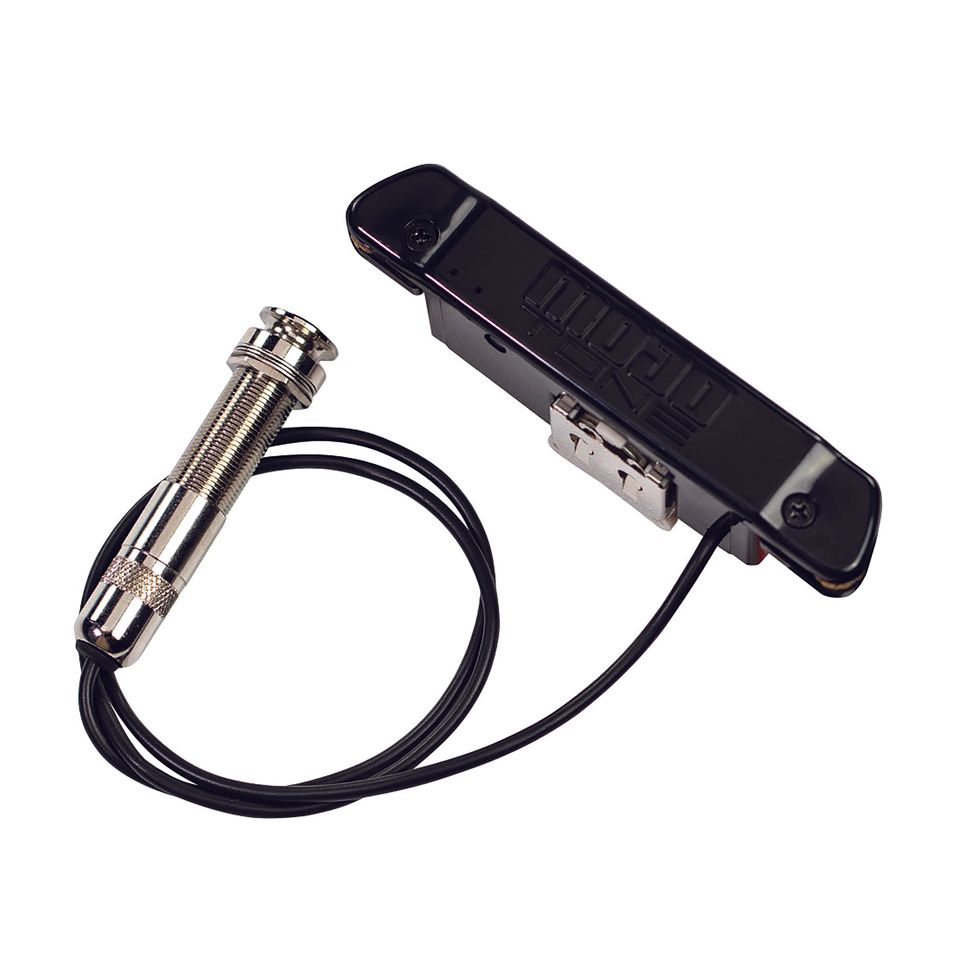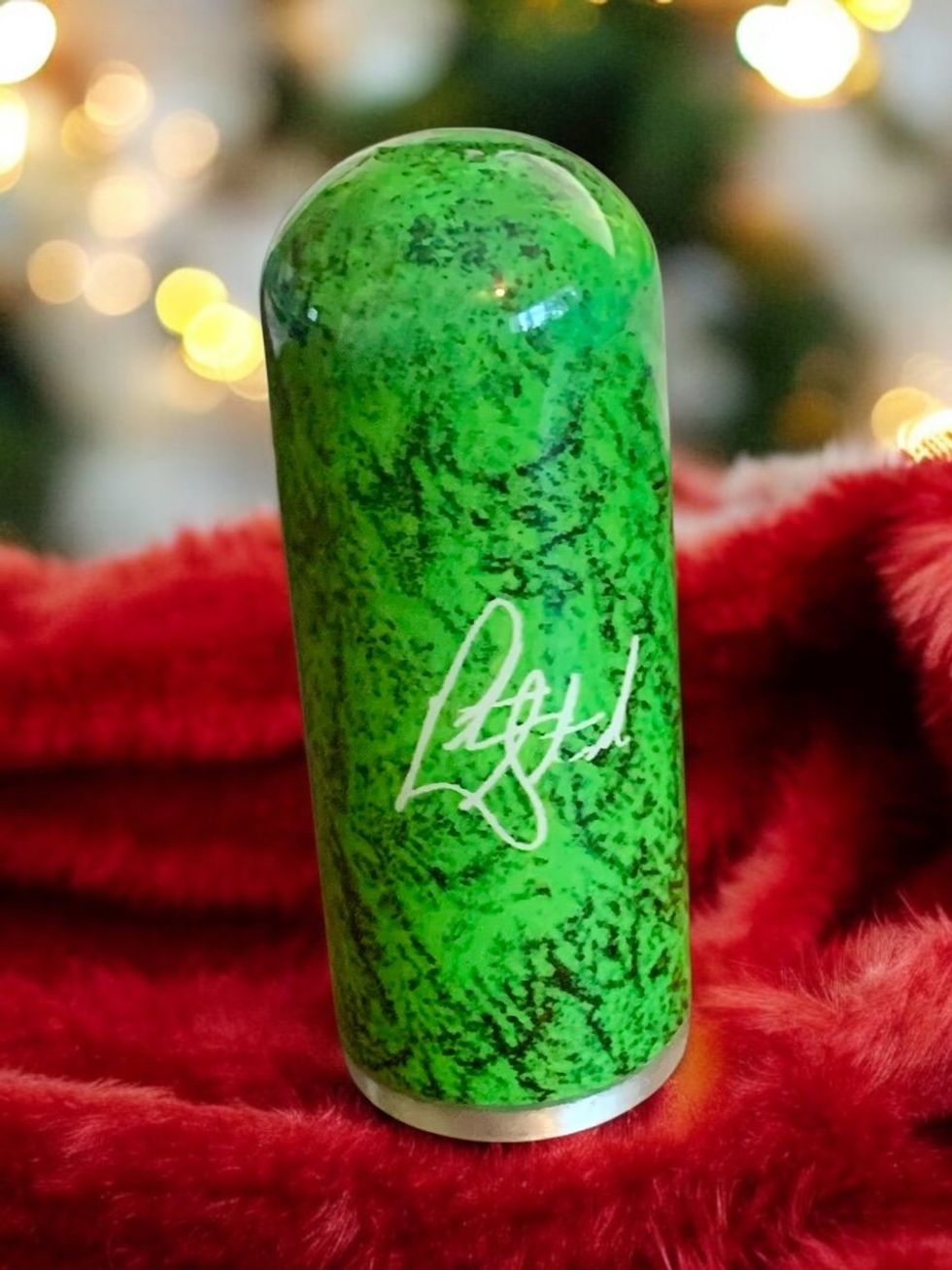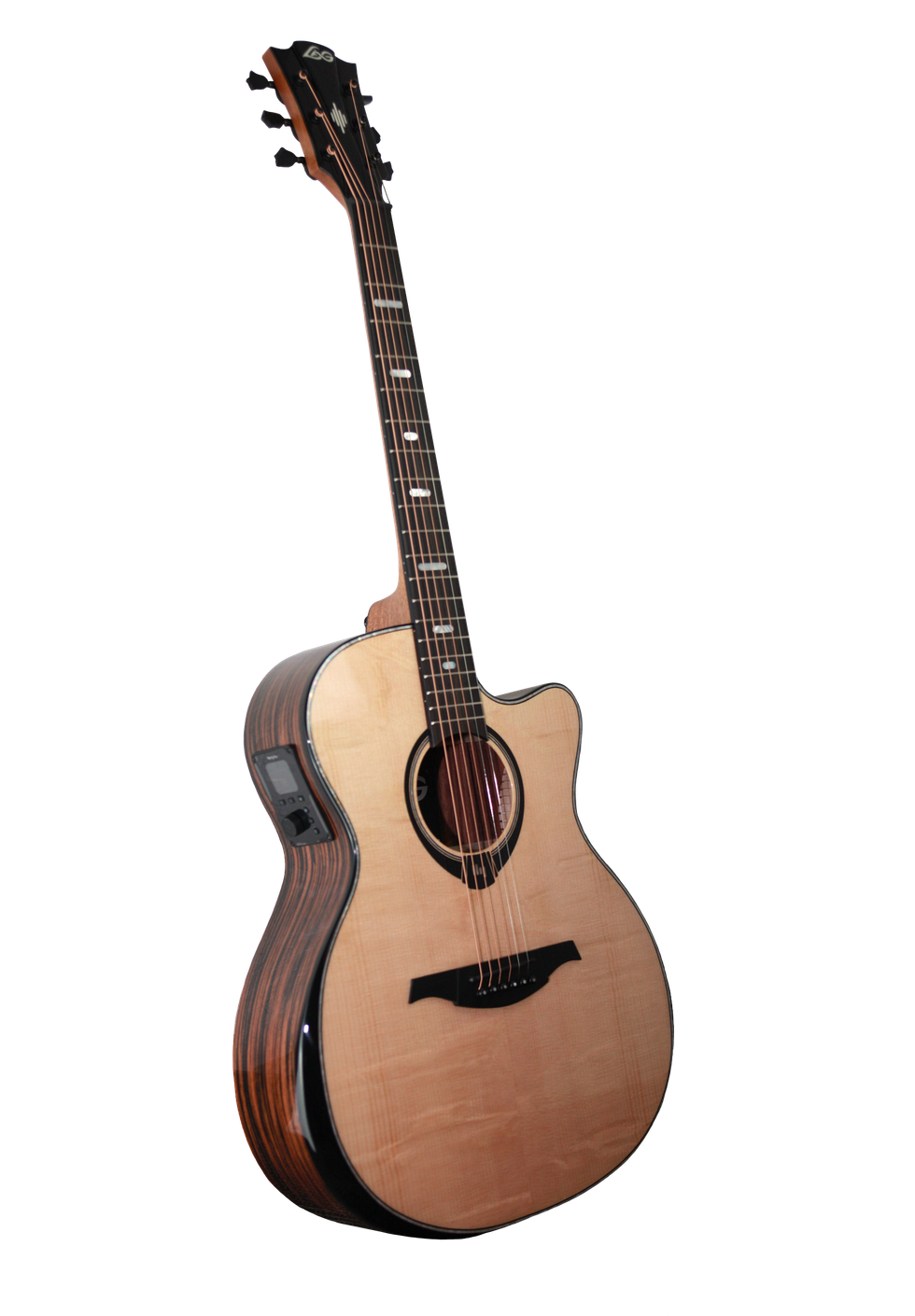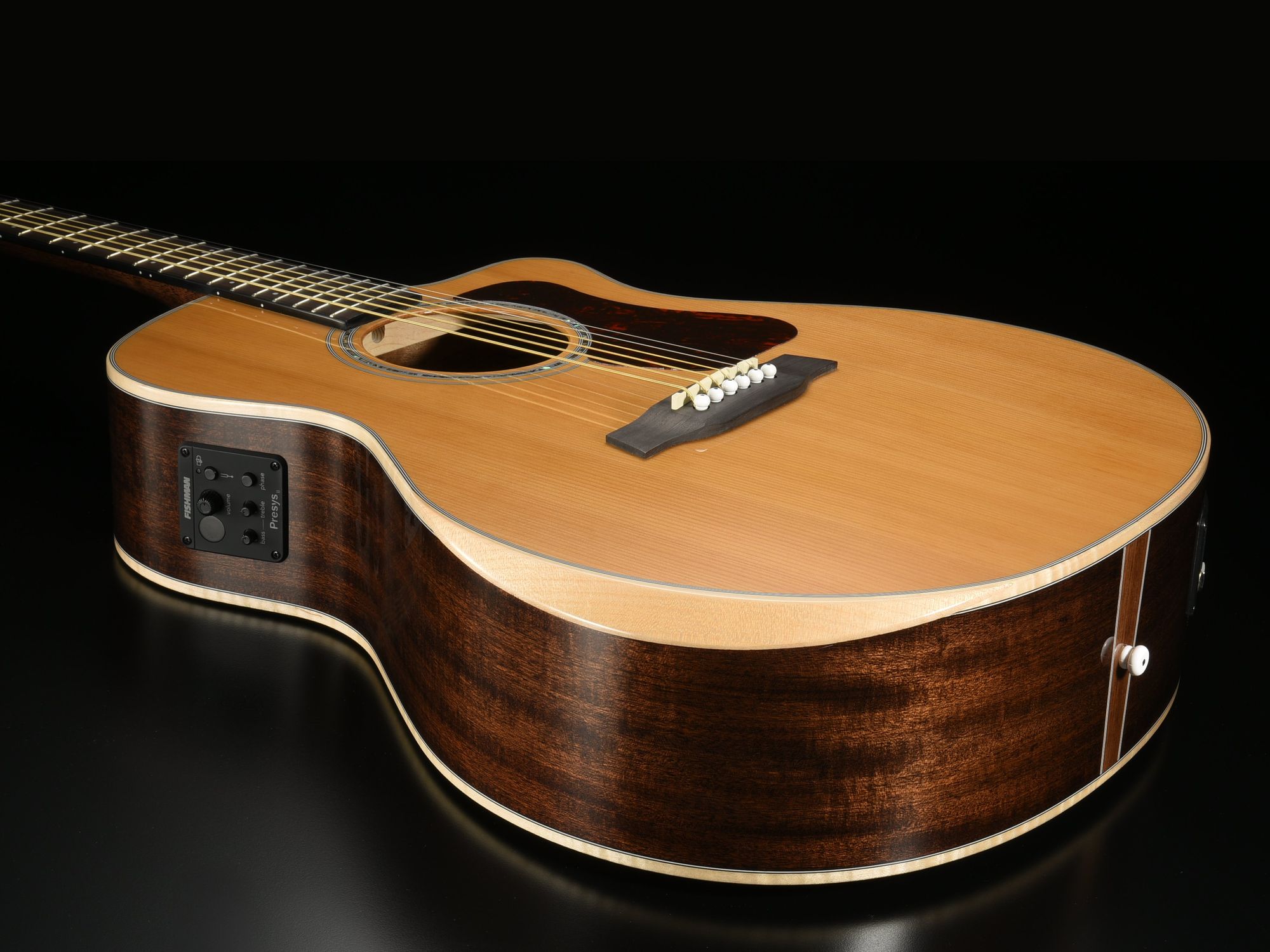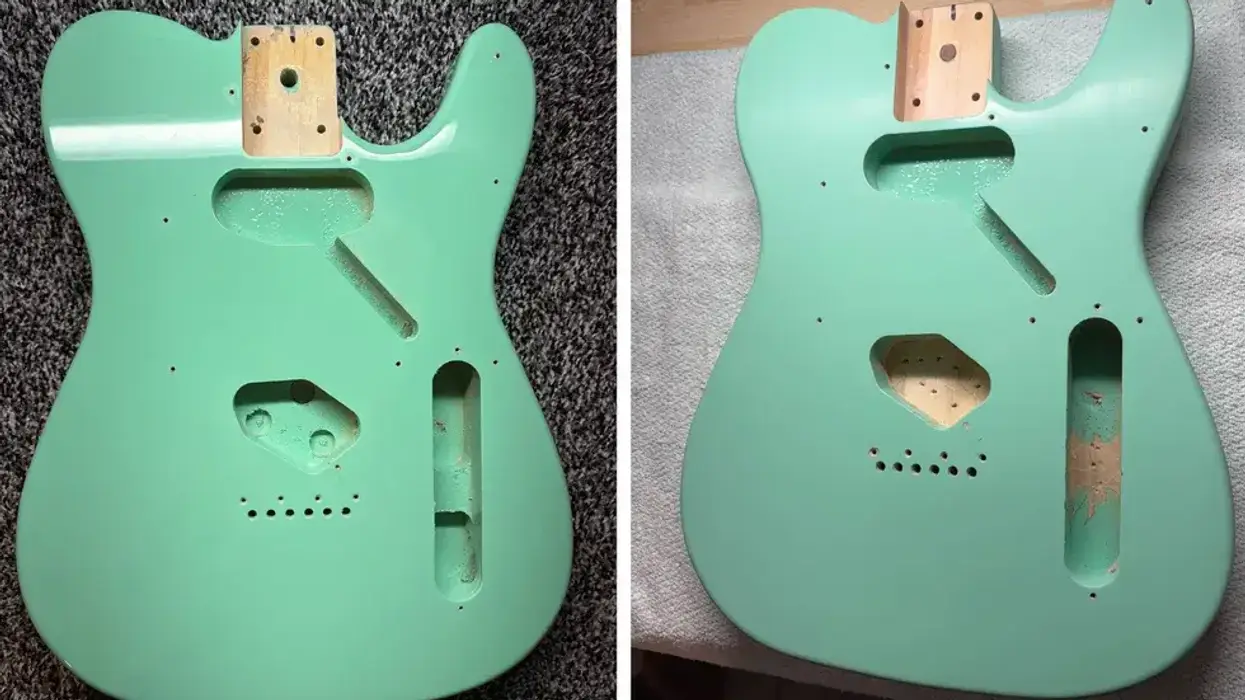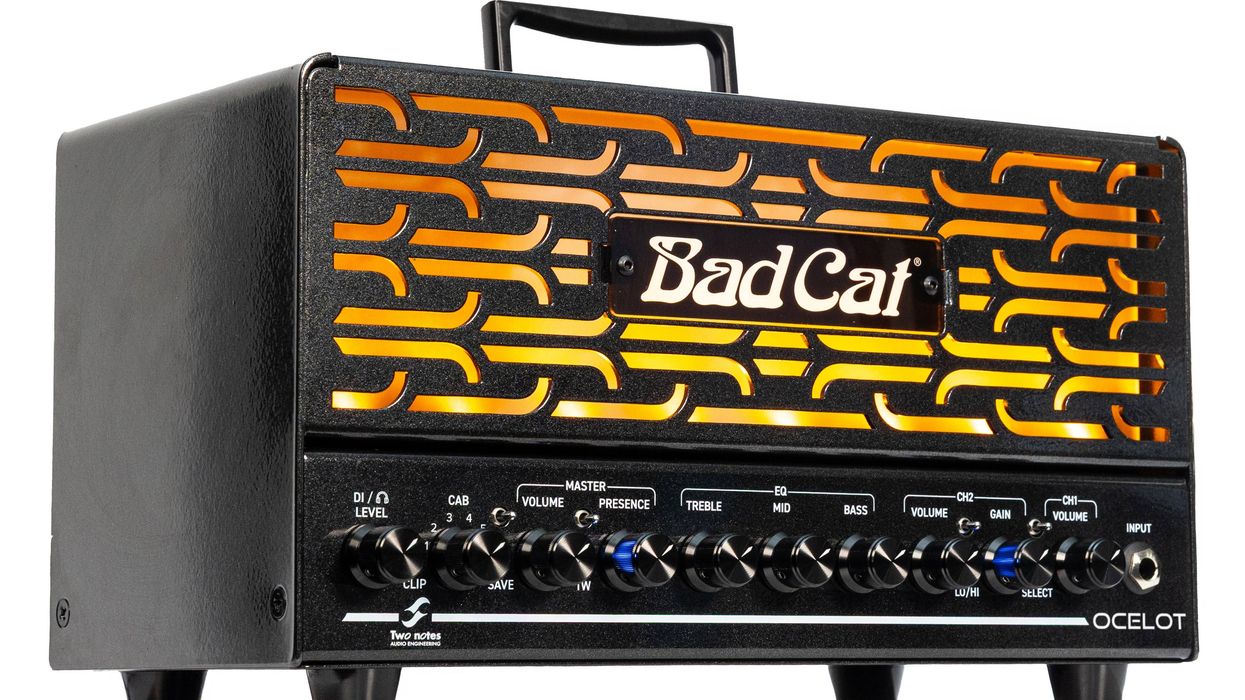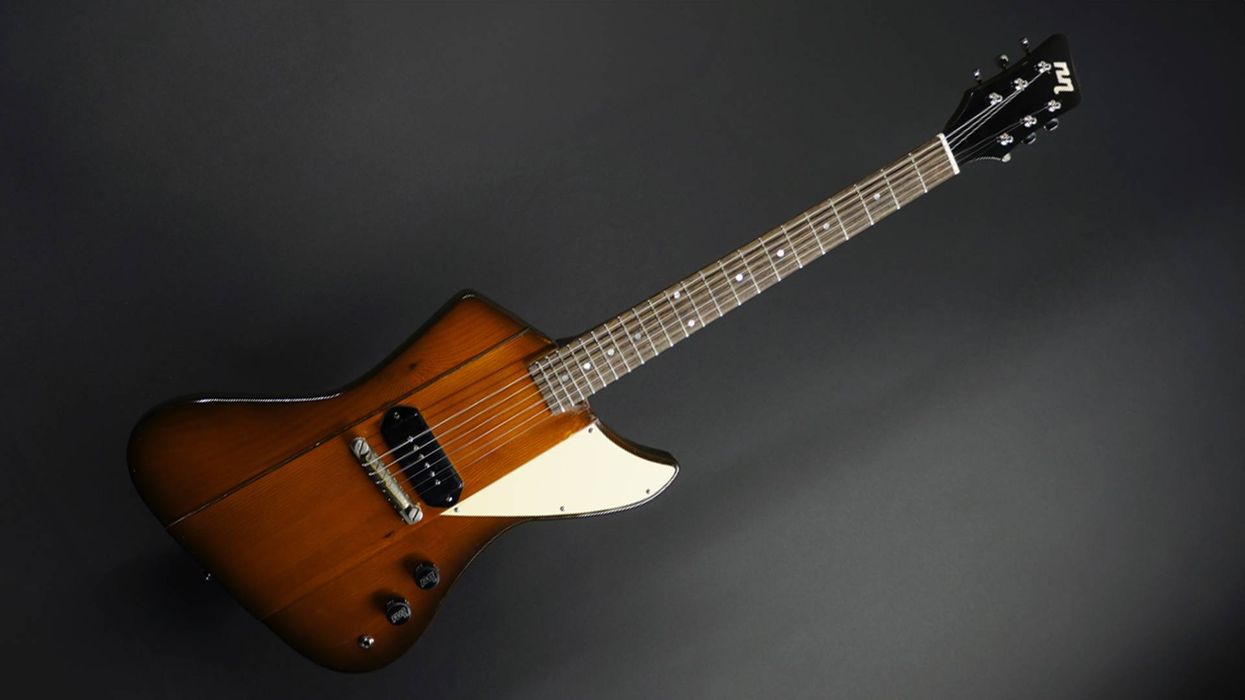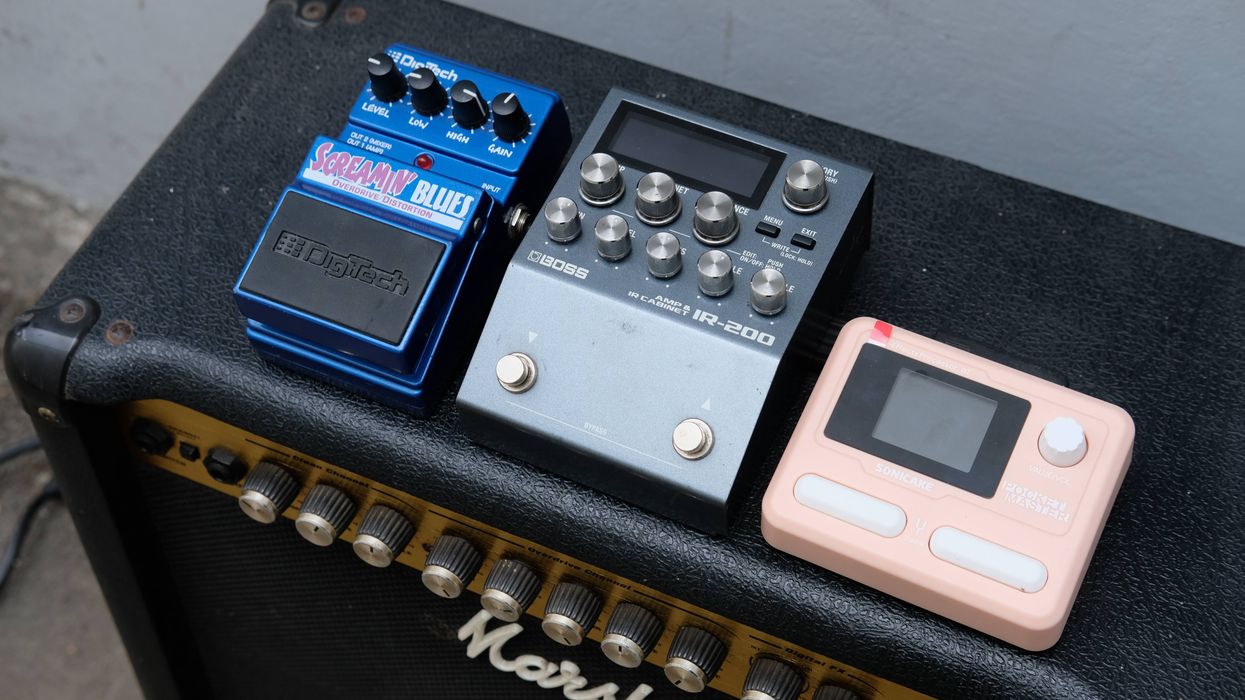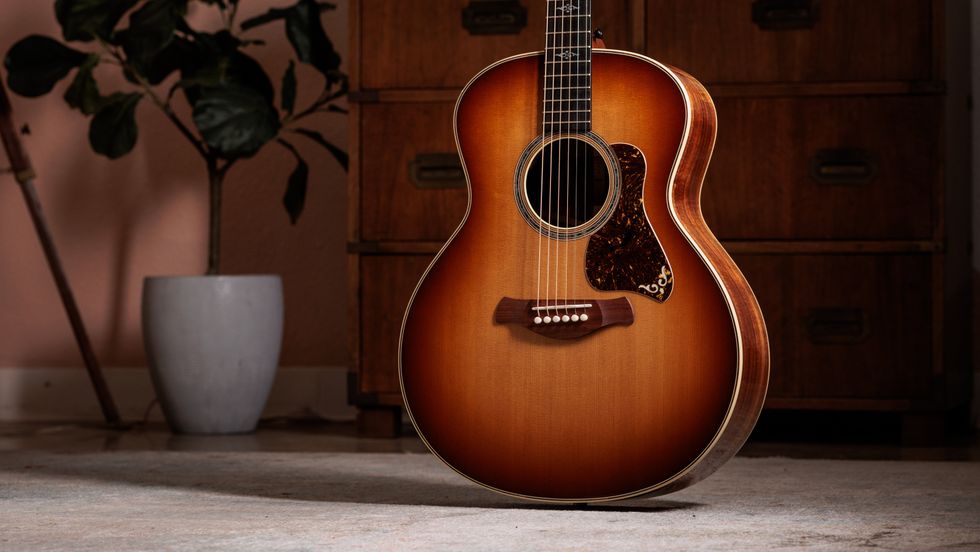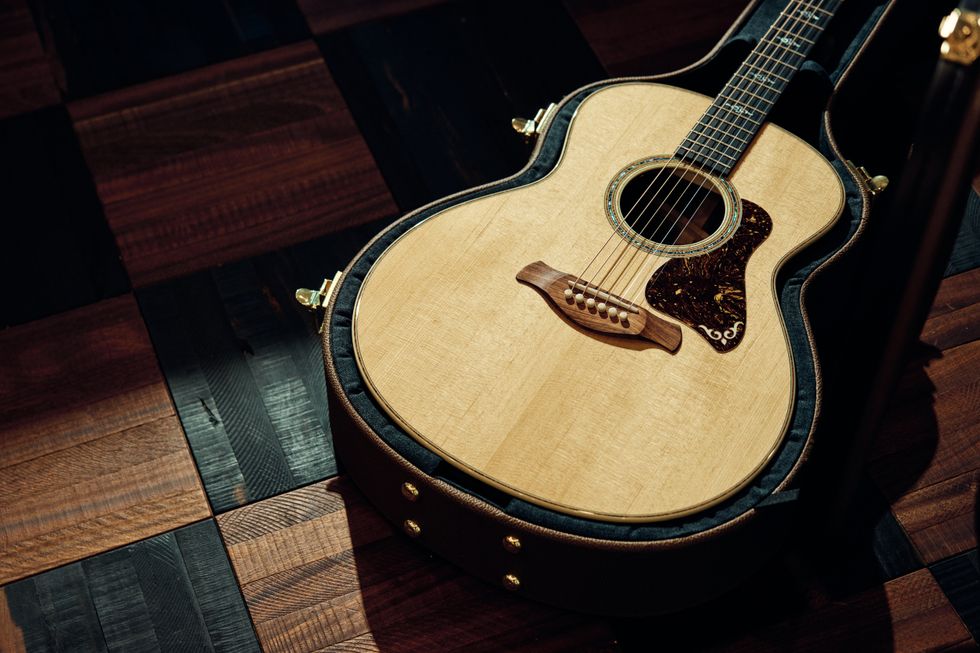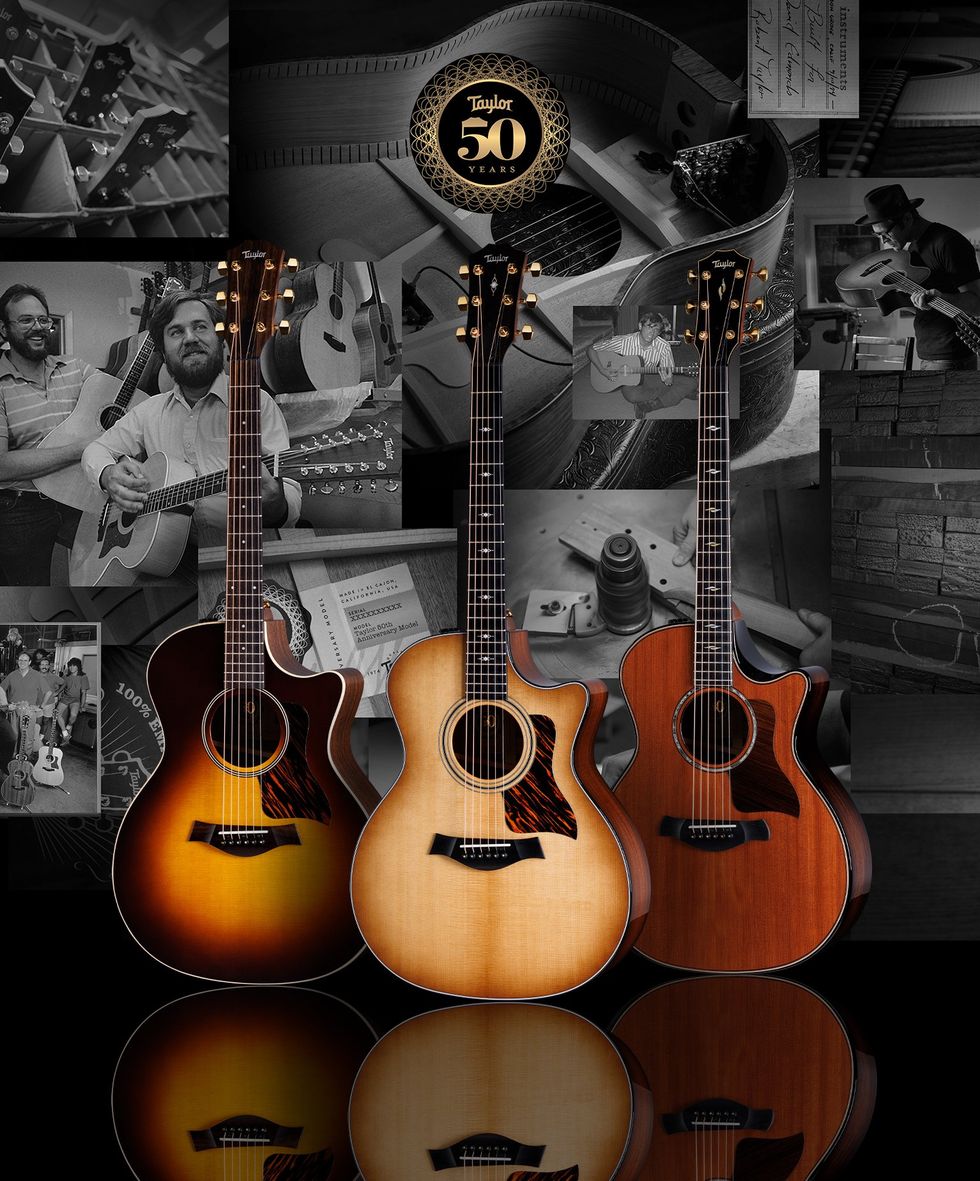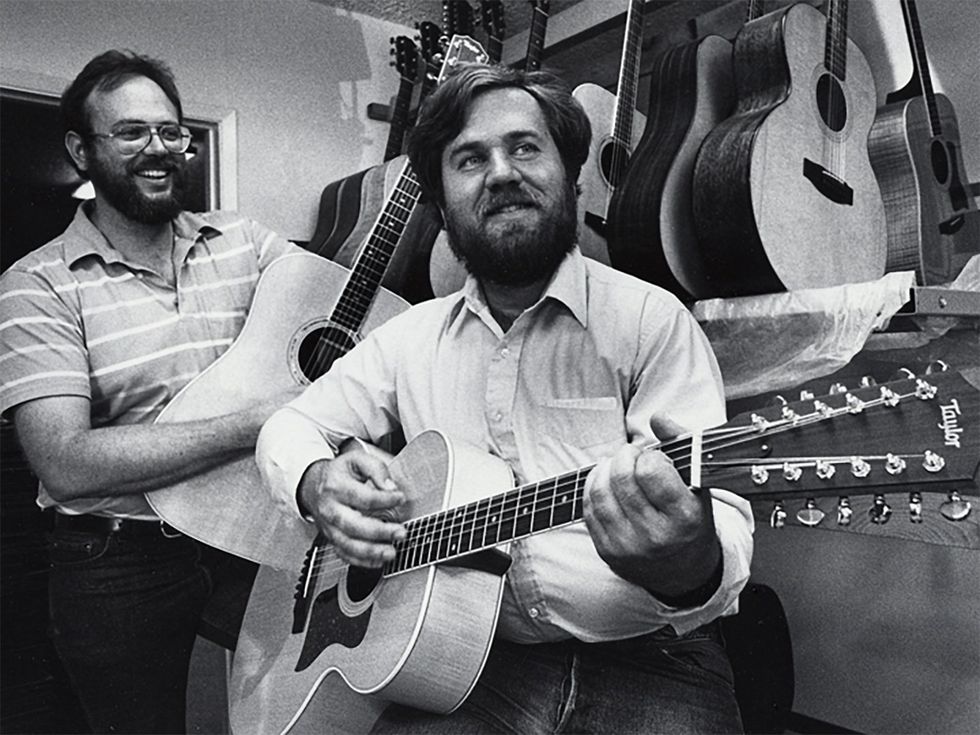The effects pioneer launches three new pedals that pair iconic drives into a single box, with circuit design that allows four variations on each pedal’s classic tones.
Every gigging musician knows this showbiz nugget: End your set on a high note. If you finish with a flourish, the audience will be salivating for your next performance.
In a way, that’s how Robert Keeley has wrapped up his 4-in-1 Series of overdrive/distortion pedals. After debuting with the wonderfully provocative Noble Screamer—a mashup of the Nobels ODR-1 and Ibanez Tube Screamer—in 2023, Keeley and his team have unleashed three new pedals simultaneously for 2024.
The troika of loveable troublemakers—the Blues Disorder, Super Rodent, and Angry Orange—continues the engineering theme and playful naming convention of the Noble Screamer. Each of the new pedals offers two independent effects featuring classic overdrive/distortion circuits. The effects are carefully paired together and allow you to mix and match their respective clipping sections and tone sections. If you wish, you can use both the drive section and tone section of circuit A exactly as it appeared in the original pedal. Same with circuit B. But the fun really begins when you experiment with mashups: You can link the overdrive section from circuit A with the tone section of circuit B, and vice versa. These “hybrid” modes offer unusual and unexpected delights. Suddenly, you have four pedals in one.
Matchmaking 101: How to Pair Iconic Pedals
The three new overdrive/distortion pedals each combine a soft-clipping classic with a hard-clipping counterpart. Angry Orange matches a carefully chosen Big Muff specimen (soft clip) and Boss DS-1 (hard clip). The Blues Disorder pairs a Marshall Bluesbreaker (soft clip) with a Fulltone OCD (hard clip). And the Super Rodent combines a Boss SD-1 (soft clip) with the venerable RAT pedal (hard clip).
The enterprise was made possible by a well-established circuit template among pedal builders that has defined the genre since its inception. “The whole series is based on a simple fact: Almost all overdrive and distortion pedals are designed with the same signal flow,” says Keeley. “They have a clipping section that feeds into a tone control.” This fundamental similarity among pedals meant that they could be combined with each other in a new, intriguing fashion.
With that in mind, Keeley relished his role as matchmaker. “I wanted to pair pedals together and thought ‘Wouldn’t it be fun to pair a RAT and a Super Overdrive?’ Their sounds are so well-known: The RAT is hard-clipping and the Super Overdrive is soft-clipping, and players love to stack these two pedals. But with the hybrid mode, players can get something that they’ve never heard before.
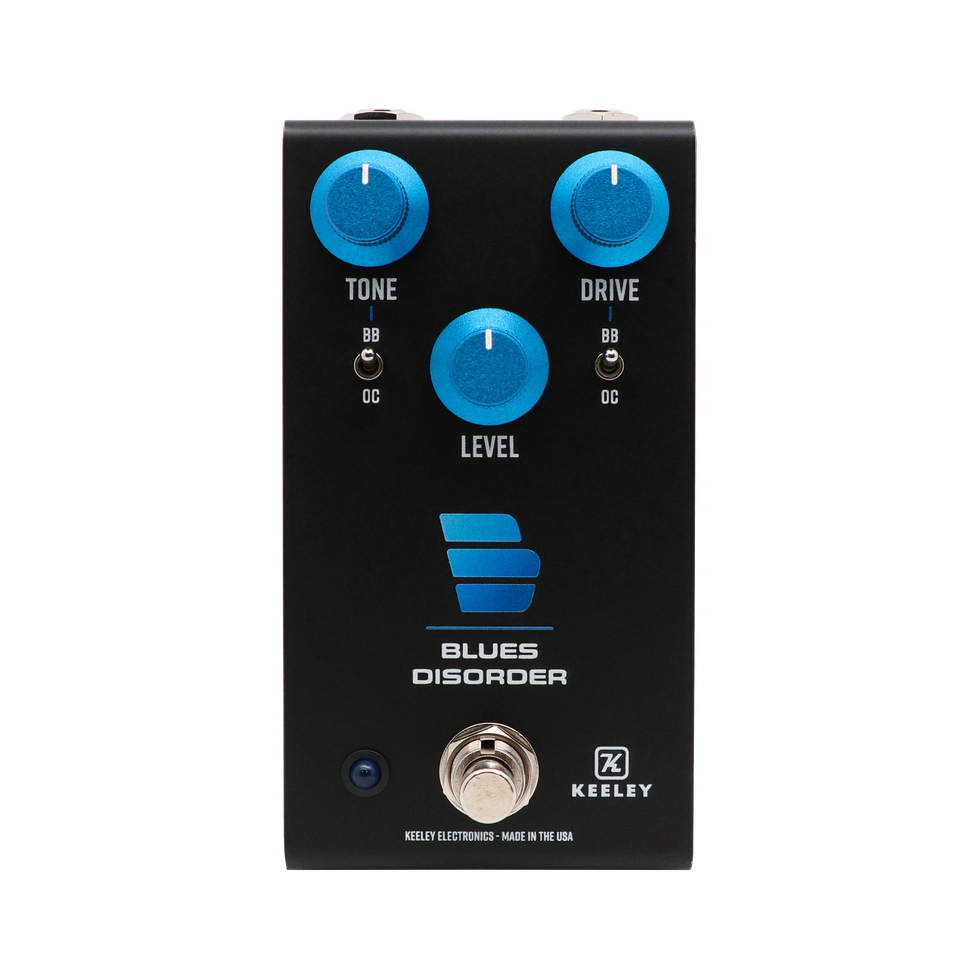
“The next one was the Blues Disorder: I wanted to put two extremely popular pedals together. So I opted to pair the Bluesbreaker—which attracts a similar type of following as the King of Tone and Morning Glory—with an OCD, which is one of the most popular distortion pedals ever. The Blues Disorder combines two super popular pedals, but now you can explore them in a way that’s totally new and fresh.
“For the third pedal, I wanted something really heavy. I thought that it definitely had to have a Big Muff, and I realized that no one is doing a boutique version of the Boss DS-1, maybe the most popular distortion pedal of all time. The Big Muff is a soft-clipping pedal and the DS-1 is hard-clipping, so this combination fit the identity of this pedal line. Interestingly, both those pedals share a similar type of tone control—the topology and resistors are kind of similar, but they carve out a different midrange and scoop. The other pedals in this series have radically different tone controls, like the Noble Screamer, the first pedal in this series.”
The matchmaking process resulted in some devilishly delightful surprises, with each pedal’s “hybrid” mode offering new and fresh tones. “I couldn’t have predicted how these hybrid modes would sound,” says Keeley. “That was a fun part of the discovery process along the way.”
A Man with a Plan
The unveiling of three new pedals marks the culmination of an idea that began more than two years ago. “All of these pedals were designed at the same time,” Keeley notes. “I wanted to have a soft-clipping pedal paired with a hard-clipping circuit. As soon as I settled on the concept, within a couple of weeks, Craighton [Keeley’s in-house engineer, Craighton Hale] had prototypes ready for the Blues Disorder and Super Rodent. The Angry Orange followed soon thereafter. They really came together very quickly.
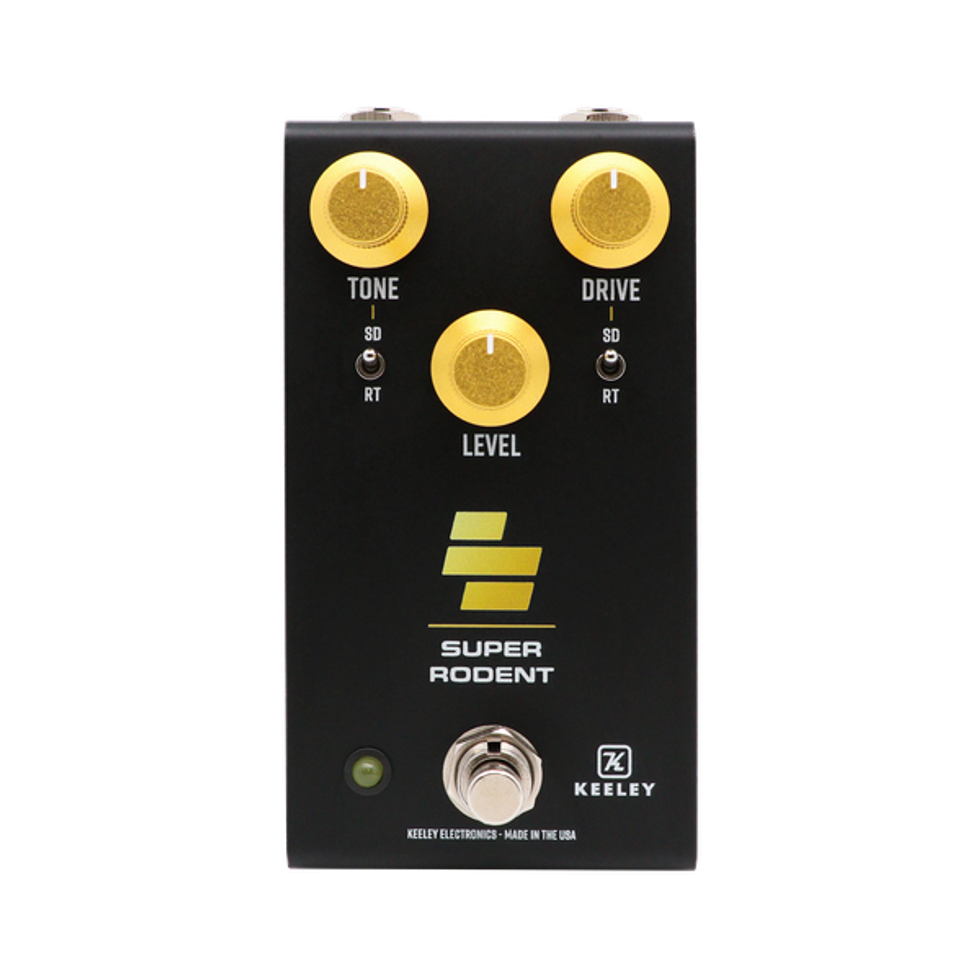
“It was relatively easy to design the Super Rodent, because there aren’t many large differences between the generations of RAT pedals and SD-1s. That one was almost done even before I started. But the Blues Disorder took a lot more effort. The different versions of the OCD are all over the place. Mike [Fuller] made a lot of changes from generation to generation. For this reason, the Blues Disorder does not have identical clones of the two pedals, like the Noble Screamer. For the Blues Disorder, we tried to create the best-sounding OCD we could come up with. And for the Bluesbreaker circuit, I bought $4,000 worth of King of Tones from all different eras, so that this pedal would compare favorably with the King of Tone and the JHS Morning Glory. I wanted the Blues Disorder to be a statement piece from Keeley. You’ve got the soft-clipping Bluesbreaker that so many people love, coupled with the OCD’s tone stack—which is really hot, so it’s almost like having another gain stage pushing the mids—in the hybrid mode.”
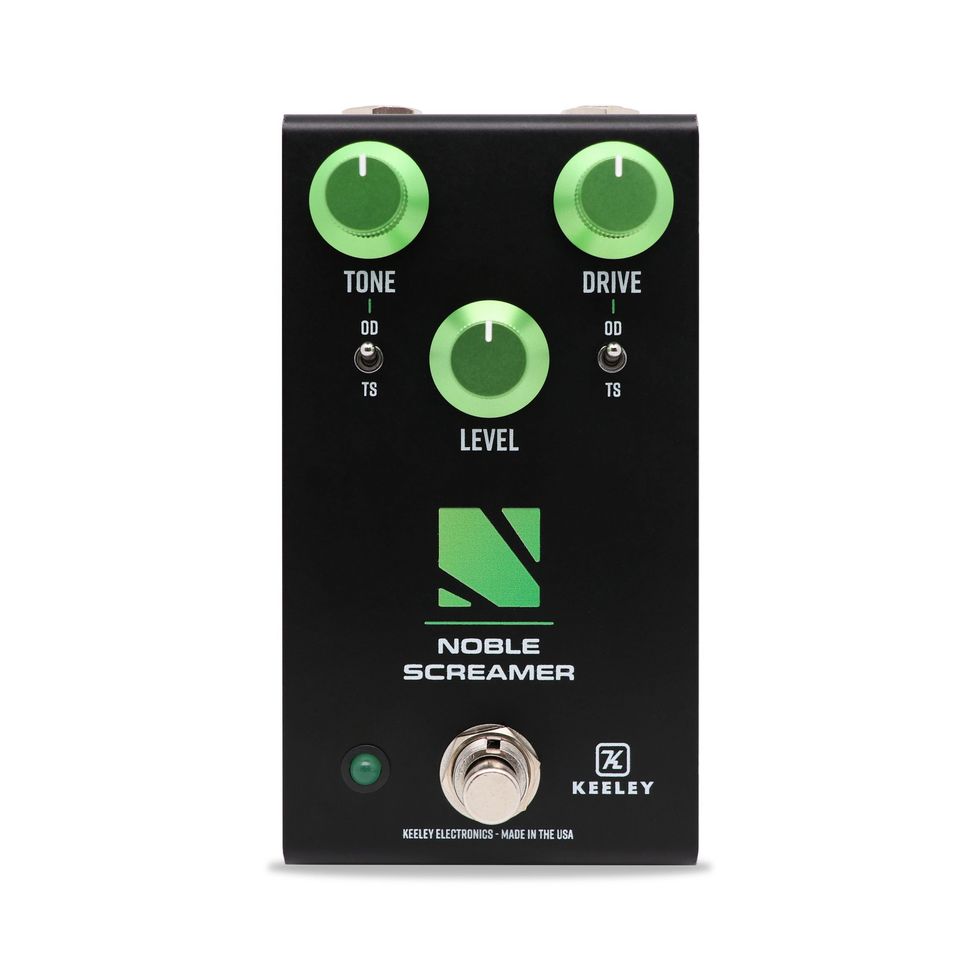
The first in the 4-in-1 series.
However, Keeley and his team opted to debut the 4-in-1 Series with the Noble Screamer. “We decided to start with the Noble Screamer for two reasons. We wanted to put that pedal under incredible scrutiny to see how well we had managed to recreate those two original circuits. And, by focusing on one pedal, we could get our manufacturing skills together to prepare for the entire line. We were making our own, newly designed case for the first time. All these pedals were designed for the old case, but when we got the capability of building our own cases, we knew that there was no way we were going to put these out in the old die-cast enclosures.”
The Name Game
The 4-in-1 Pedal Series benefits from the cheeky names for each model. Again, Keeley and his team had a plan in mind right from the get-go: “I had a few rules I tried to follow. Whenever possible, I tried to use a word from each of the individual pedals. So the Noble Screamer got its name from the Nobels ODR-1 and Tube Screamer. The Super Rodent was really easy, because it borrows from the Boss SD-1 Super Overdrive and RAT. The Blues Disorder comes from the Bluesbreaker and OCD—obsessive compulsive disorder. The fun one is Angry Orange because it doesn’t have the word ‘Muff’ in it. That one gets its name from the orange color of the DS-1. If you look up ‘orange distortion’ on Google, it immediately comes up. And the Big Muff is kind of an angry-sounding pedal, so that’s how we got the name.”
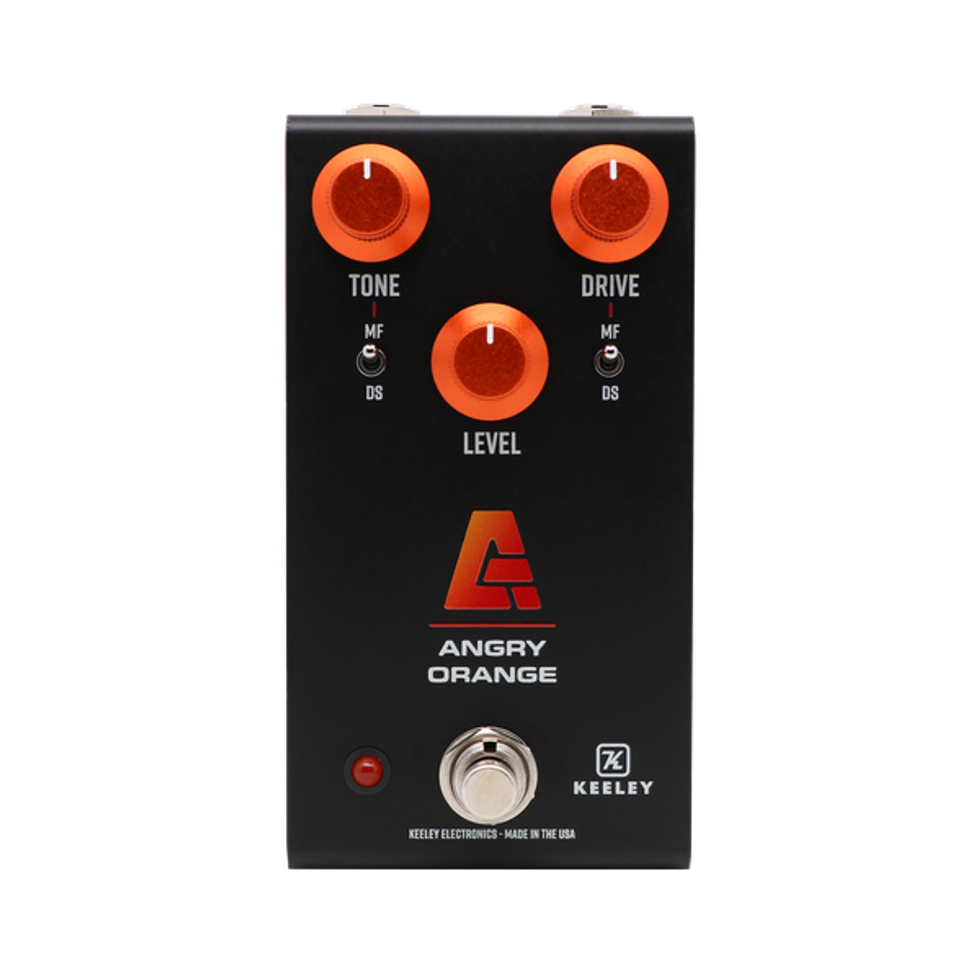
The Angry Orange presented an additional challenge: Which version of the Big Muff and DS-1 would be used? “In choosing the right Big Muff, I considered at least five or six different variants—the op-amp Muffs, the Ram’s Head, and various transistor Muffs. As I was searching for the right Muff, I came across this very interesting and rare Sovtek Russian Civil War Big Muff. It’s this blue and grey thing—Mike Matthews had the team in Russia print both sides of the enclosure. We ended up using this transistor Muff. It sounds incredible. When it came to choosing the DS-1, I started looking at the older Japanese models that I have in my collection, but then I listened to one of the Waza Craft versions and those sound great. They’re designed totally differently from the vintage DS-1s, and we thought that they sounded better than the old ones. We went in there with our analyzers and Aaron’s ears [Aaron Pierce, a key member of the Keeley design team] and we spent a ridiculous amount of time finessing the DS-1 and Muff circuits to work well with each other. That Angry Orange pedal took the most amount of work, after getting the Noble Screamer to sound exactly like the originals.”
Some Contenders That Were Left Behind
For the sake of diversity and practicality, Keeley says that several iconic pedals were never in the mix as potential candidates. “I didn’t really want to do a Timmy pedal or a Zendrive. And I couldn’t do a Distortion+ because it doesn’t have a tone control. There were two other pedals that kept coming up in forum comments, the Klon Centaur and Boss BD-2 Blues Driver. But I couldn’t use them in this series because they use dual pots in their original design. In this series I’m already using custom dual potentiometers for both volume and tone because they’re controlling two completely separate circuits. If I were going to attempt doing a Klon or BD-2, I’d have to use a triple-stack potentiometer, and I don’t know if it would’ve even fit into the pedal.”
“I would’ve loved to put the Marshall Bluesbreaker and the Boss Blues Driver in the same pedal, but the Blues Driver’s dual pot made it impossible. And an OCD and Klon would’ve made a fun combination, because they sound radically different, but I couldn’t do that since the Klon uses a dual potentiometer in its design already.”
The Keeley Team Employs the Science of Tone … and Ears
In designing and building the new series of pedals, Keeley and his team have strived to achieve a new level of consistency and sonic precision. “We’re using several Audio Precision analyzers, and they’re so cool,” Keeley enthuses. “We can measure the frequency response, the signal-to-noise ratio, and the total harmonic distortion for any of these designs. We can create a complete ‘CAT scan’ of the desired pedal and use it to dial in the sounds of our own designs. I fell in love with these things, so we use them now on the production floor to test all of our units, so our production is much more consistent.”
But even with the increased use of measurement tools, the company’s product development process boils down to the most important factor: how these pedals sound to the human ear. And this is where one member of the Keeley team plays a particularly crucial role. “Aaron Pierce is the golden ears of Keeley Electronics,” notes Keeley. “I can change one part by 10 percent, out of 70 to 100 parts, and he’ll hear it. It’s amazing, and he consistently does it day after day. So as much as I love my analyzers, I rely on Aaron’s ears—he’s a critical factor in the development of our pedals.”
Keeley gives props to Craighton Hale as another core member on the team, and his work shines on the 4-in-1 Series. “He has designed all the Keeley circuit boards since 2012. He put in a huge amount of effort in designing the smooth, quiet switching systems so that you can go into hybrid mode or change platforms without any popping or noises.”
Looking Ahead
The 4-in-1 Pedal Series marks an important new phase in the company’s evolution. In recent years, Keeley has made major investments in his Oklahoma City manufacturing facility, moving into a brand-new building in 2021 and stocking it with advanced production machinery. The 4-in-1 Series enclosures—sleek-looking, extraordinarily durable housings—are made in-house and represent one of the most notable results from Keeley’s improved production capabilities. “I feel like this is the beginning of the next generation of Keeley Electronics. Now that we have a lot of circuit-board-making capabilities and can build our own enclosures, I feel that we can make an impact in drive pedals. In recent years, we’ve focused on reverbs and delays, but now we can re-engage with overdrives.”
Guitarists have responded very positively to the new 4-in-1 Series, and Keeley says that positivity is shared by one of the most notable voices in the pedal community. “Dan Steinhardt from That Pedal Show told me that, ‘The problem with drive pedals is option paralysis.’ There are too many bells and whistles. But with these pedals, Dan said that the problem is solved by keeping the pedals in a 3-knob overdrive format. It felt so good to hear him say that.”
With that type of validation for the 4-in-1 pedal concept, Keeley gratefully acknowledges that the bold concept was worthwhile. “As an engineer I really want to make it easier to make music. I want to help make it more inspirational. So if we can find a clever way to put drive pedals together, that makes me feel really good as an engineer to be able to offer something fun and unique.”
